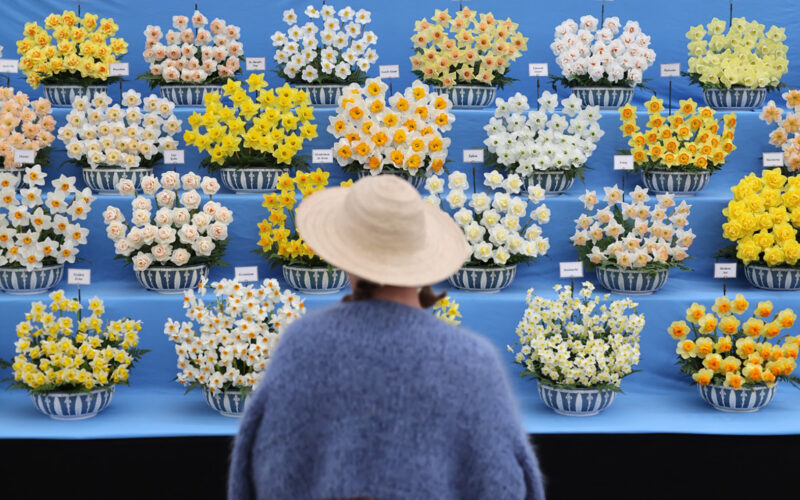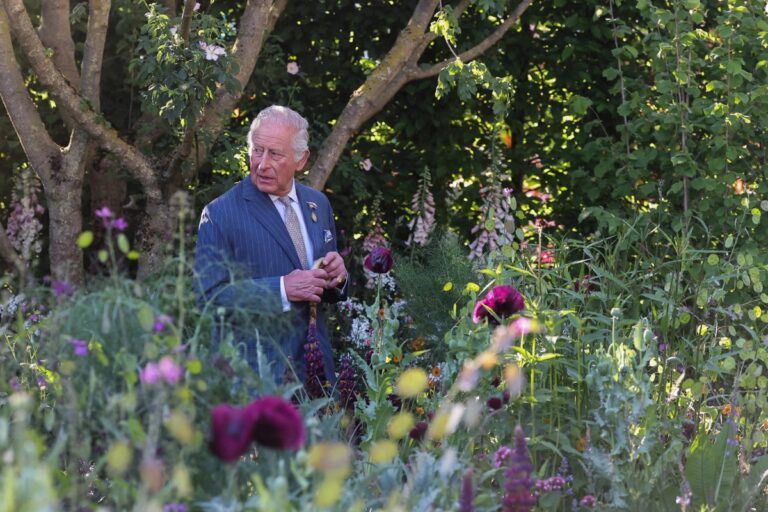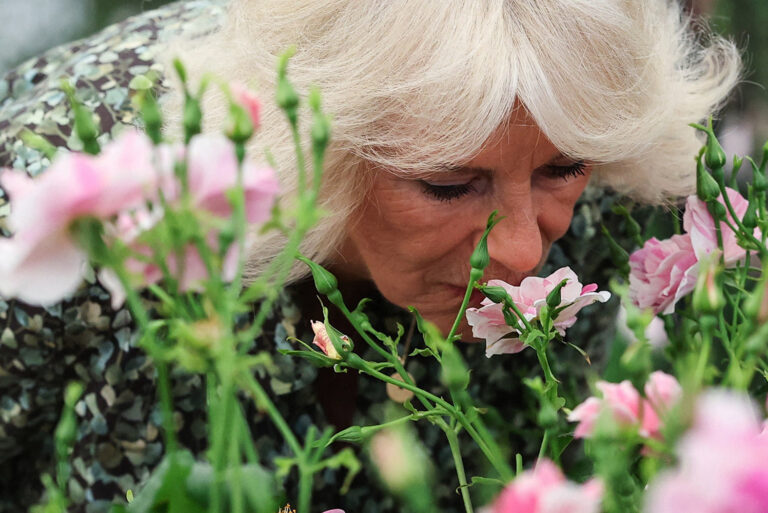Talking trees powered by AI, drought-resistant crops and sweet potatoes sprouting among flowers − the prestigious Chelsea Flower Show is facing the future with a focus on innovation and climate-change adaptation.
Over five days starting on Tuesday, more than 140,000 visitors are expected to view what the Royal Horticultural Society (RHS) bills as “the pinnacle of horticultural excellence”.
There are stunning gardens, 30 competing for top awards, and more than 400 exhibitors showcasing their gardening knowledge and carefully cultivated plants to the public and champagne-sipping VIPs.
King Charles III visited on Monday with Queen Camilla, with an eye on the show’s first ever-dog garden, designed by celebrity gardener Monty Don.
The head of state also visited the Wildlife Trusts’ British Rainforests garden where the main attraction is a 50-year-old fern that once thrived in the Great Park of Windsor.
The garden was “inspired by the enchanted forests of Arthurian legend” and it “rekindles the wild and wet woodlands that once swathed vast landscapes along the west coast”.
Intelligent Garden
In the Intelligent Garden, plant lovers can truly talk to the trees thanks to artificial intelligence.
Pioneering AI sensors called Treetalk have been installed to give updates on the trees’ needs in urban environments, whether they are under stress and how to care for them.
“Urban trees filter air pollution, cool the air, support wildlife, and boost community well-being. Yet, they face immense challenges,” the RHS said about the garden designed by Tom Massey and architect Je Ahn.

About 50% of urban trees do not survive beyond 10 years and up to 30% die in their first year, it added.
“The use of AI is not going to replace a human being, our intuition and our labour. It’s still the core and heart of this garden,” Je Ahn said.
But data could give “a clearer picture of what’s going on around us”.

‘Challenging conditions’
The plants on display in the Garden of the Future “have the ability to survive in a range of challenging conditions,” the designers told the RHS.
Growing among the more common hawthorn bushes, are sweet potatoes which have “fantastic nutritional value and are drought resistant,” sorghum a popular cereal from Africa, rock roses and chickpeas that are “more resilient to warmer climates”, they said.
Those are all crops that “can grow right here in the UK”, said Ana Maria Loboguerrero, the Gates Foundation’s director of adaptive and equitable food systems.
It is the first time the foundation has sponsored a garden at the show.

Designers Matthew Butler and Josh Parker said the show was a chance to reflect on “the future of crops, food and livelihoods in the face of climate change”.
The theme of sustainability is echoed across the show, including in the Seawilding garden inspired by the landscape around Loch Craignish, on the west coast of Scotland.
It includes a saltwater pool, planted with seagrass − the first time that it has ever been displayed at the show and the UK’s “only native flowering plant in the ocean,” the RHS says.
“The theme of sustainability is echoed across the show”
Designer Ryan McMahon said he “always assumed seagrass grew in warmer climates” so was intrigued when he discovered it in Scotland.
There is also a garden called ‘Songbird Survival’ amid reports bird numbers have fallen in UK gardens by 50% in the past two generations.
Or visitors can discover the ‘Making Life Better with Bees’ garden, with insects key to pollination.
The annual horticultural show is organised in the grounds of the Royal Chelsea Hospital, and has long championed environmental issues.

In 2021, the RHS it said it would ban the use of peat, a natural captor of CO2 one of the main greenhouse gases blamed for global warming, from the end of 2025.
But growers will be able until 2028 to continue using peat, an organic material made over thousands of years from decaying vegetation in the UK’s dwindling wetlands.
The RHS decided to push back the peat ban for growers “due to a complex horticultural supply chain where 60% of young plants, many grown in peat, are sourced from abroad”.












